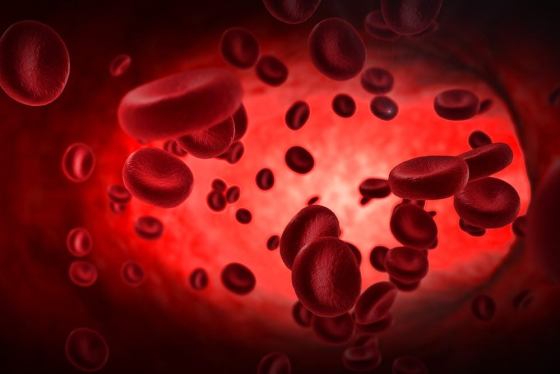More researches have validated the use of African pepper (Xylopia aethiopica) and goat weed (Ageratum conyzoides) for use in the prevention and treatment of cancers.
AS Nigerians and indeed the rest of the world continue to live longer because of new innovations in medical care and with improved health promotion and education, a report forecast from the United Kingdom (UK), released last week, has predicted that the number of people who will get cancer during their lifetime will increase to nearly half the population by 2020.
But recent studies suggest that eating food prepared with African pepper and other spices and goat weed can prevent cancer.
German and Camerounian researchers following laboratory experiments conducted at Johannes Gutenberg University Mainz (JGU), Germany have concluded that African medicinal plants contain chemicals that may be able to stop the spread of cancer cells.
The study was published last week in the journal Phytomedicine. The researchers said the plant materials would now undergo further analysis in order to evaluate their therapeutic potential.
Prof. Thomas Efferth of the Institute of Pharmaceutical Sciences and Biochemistry – Therapeutic Life Sciences at Mainz University said: “The active substances present in African medicinal plants may be capable of killing off tumor cells that are resistant to more than one drug. They thus represent an excellent starting point for the development of new therapeutic treatments for cancers that do not respond to conventional chemotherapy regimens.”
Nigerian and Chinese researchers have also in a study published recently in Pharmacognosy Magazine showed that Ageratum conyzoides (goat weed) possessed anticancer and antiradical properties in most cancer cell lines. The cancer cell lines include: Human non-small cell lung carcinoma (A-549), human colon adenocarcinoma (HT-29), human gastric carcinoma (SGC-7901), human golima (U-251), human breast carcinoma (MDA-MB-231), human prostate carcinoma (DU-145), human hepatic carcinoma (BEL-7402), and mouse leukemia (P-388) cancer cell lines.
The study is titled “Anticancer and antiradical scavenging activity of Ageratum conyzoides L. (Asteraceae).”
In another study published recently in Phytotherapy Research, Nigerian and Indian researchers concluded: “These results indicate that Xylopia aethiopica (African pepper) fruit extract (XAFE) could be a potential therapeutic agent against cancer since it inhibits cell proliferation, and induces apoptosis and cell cycle arrest in human cervical cancer cell line C-33A.”
The study is titled “Anti-proliferative Action of Xylopia aethiopica Fruit Extract on Human Cervical Cancer Cells.”
Also, French and Cameroun researchers have confirmed the confirmed the cytotoxic activity of Xylopia aethiopica extract against a panel of cancer cell lines and identified the main compound responsible for this cytotoxic effect: ent-15-oxokaur-16-en-19-oic acid (EOKA).
The study published in Cell Division is titled “Characterisation of the anti-proliferative activity of Xylopia aethiopica.”
Xylopia aethiopica, commonly called African pepper or Guinea pepper belongs to the family Annonaceae. In Nigerian Arabic, it is called kyimba in, kumba in Arabic-Shuwa, kenya in Bokyi, akada in Degema, unie in Edo, ata in Efik, kimbaahre in Fula-Fulfulde, kimbaa in Hausa, ata in Ibibio, uda in Ibo, tsunfyanya in Nupe, kimbill in Tera, eeru in Yoruba.
Xylopia aethiopica, a plant found throughout West Africa, has both nutritional and medicinal uses.
The cloves of the plant Xylopia aethiopica, a member of the custard apple family, Annonaceae, are used as a spice in various traditional dishes of Western and Central Africa. The plant is also used in decoction to treat dysentery, bronchitis, ulceration, skin infection and female sterility.
According to The Useful Plants of West Tropical Africa by H. M. Burkill, “the powdered root of Xylopia aethiopica is used as a dressing for sores and to rub on gums for pyorrhoea and in local treatment of cancer in Nigeria, and when mixed with salt is a cure for constipation.
“The powdered bark is dusted onto ulcers, and a decoction of leaves and roots is a general tonic in Nigeria for fevers and debility, and enters an agbo prescription. The leaves have a pungent smell. A decoction is used in Gabon against rheumatism and as an emetic, and as a macerate in palm-wine it makes a popular intoxicating drink. In Congo powdered leaves are taken as snuff for headaches, and used in friction on the chest for bronchio-pneumonia.”
Commonly called goat weed and billy goat weed, Ageratum conyzoides L. belongs to the plant family Asteraceae (formerly Compositae). It is native to Central America, Caribbean, United States, Southeast Asia, South China, India, Nigeria, Australia, and South America.
It is traditionally called ufu opioko and otogo by the Igedes in Benue state, Nigeria. In Southwestern Nigeria, it is known as Imí esú. It is called ebegho-edore in Edo, ikoun ifuo eyen in Efik, agadi isi awa in Ibo, huhu in Tiv, ako yunyun in Yoruba.
Ageratum conyzoides has been used in folklore for the treatment of fever, pneumonia, cold, rheumatism, spasm, headache, and curing wounds. It is gastro-protective, antibacterial, anti-inflammatory, anti-analgesic, antipyretic, anticoccidial, and anticonvulsant properties have been reported.
According to The Useful Plants of West Tropical Africa by H. M. Burkill, “the leaves of Ageratum conyzoides are considered to be antiseptic. Preparations are commonly applied to craw-craw in the Region, and to itch in South East (SE) Asia. In Congo the sap is put onto prurient affections of the skin. The leaves are cicitrisant. They are applied to chronic ulcers, to bruises, cuts and sores, and circumcision wounds in Nigeria; to cuts and sores in Gabon, Tanganyika and in Ethiopia; as a haemostatic topically on wounds and haemorrhoids and intra-vaginally for uterine bleeding in Ivory Coast.
“The sap or the plant, dried and powdered, is a wound-dressing in Tanganyika, and is valued especially for burns; similar uses are recorded in SE Asia. The leaves may have some analgesic action: powdered leaves are applied to the forehead for headache in The Gambia; the whole green leaf is so used in Nigeria; the sap in Congo, and mixed with clay in Ivory Coast-Upper Volta for headache and chest-pains. Leaves baked in palm-oil are used for rheumatism in Gabon.”
Currently, over 50 per cent of drugs used in clinical trials for anticancer activity were isolated from natural sources or are related to them. A number of active compounds have been shown to possess anticancer activity; these include flavonoids, diterpenoids, triterpenoids, and alkaloids. Several mechanisms have been proposed to explain the cancer-preventive effects of plants. These include inhibition of mutagenesis by inhibiting the metabolism, inhibition of Deoxy ribo-Nucleic Acid (DNA)/genetic material adduct formation, free-radical scavenging, and effects on cell proliferation and tumor growth.
Meanwhile, for the past four years, Efferth and biochemist Dr. Victor Keute of the University of Dschang in Cameroon have been studying the active substances in African plants such as the giant globe thistle, wild pepper, speargrass, and Ethiopian pepper.
The researchers of the Ageratum conyzoides study wrote: “In the present study, the petroleum ether and ethylacetate extracts of ethanolic extract of A. conyzoides showed inhibitory activity on a wide range of cancer cell lines with ethylacetate extract having the greatest activity. It could therefore be deduced that the ethylacetate and petroleum ether extracts of A. conyzoides possess anticancer properties.
“Flavonoids have been implicated as responsible for the anticancer activities of some medicinal plants. The study showed that the flavonoids cis-2,5,7-trihydroxyflavanonol-3-O-?-D-glucopyranoside and chrysin-6-C-?-D-glucopyranosyl-8-C-?-L-arabinopyranoside exhibited significant cytotoxicity activity on A-549 and BGC-823 cancer cell lines. Thus, flavonoids may be responsible for the anticancer activity of A. conyzoides.
“Studies conducted by reported a high correlation between DPPH radical scavenging potential and total phenolic content. Kaempferol (3,5,7,4?-tetrahydroxyflavone) is one of the most commonly found dietary flavonols. Kaempferol has also been found to be a blocker of reactive oxygen species (ROS) production by low K+-induced apoptosis in cerebella granule cells.
“According to previous reports, antioxidant activity of kaempferol was believed to have cytoprotective function against oxidative stress. It seemed to suggest that kaempferol may not only protect cells from free radical damage via antioxidant effect, but also induce apoptotic cell death, via pro-oxidant activity, in malignant cell lines and to inhibit tumorigenesis.
“The antitumor, anti-inflammatory, antiulcer activity, and HIV protease inhibitory activity of kaempferol have also been reported.
“The result of the present investigation showed that A. conyzoides possesses antiradical activity and the property resides on the ethyl acetate extract. Kaempferol, which was isolated from this extract, was found to scavenge DPPH radical. It could therefore be deduced that the bioactive compound responsible for the antiradical activity of A. conyzoides is 3,5,7,4?-tetrahydroxyflavone (kaempferol).
“Further research is needed to unravel the specific bioactive compounds responsible for the anticancer properties of the extracts of A. conyzoides. In conclusion, the study has not only established the anticancer property of the extracts of A. conyzoides but also its antioxidant activity. Thus, the plant could be employed in ethno-medicine for the management of cancerous diseases.”
Meanwhile, several studies have shown that X. aethiopica extracts possess antibacterial, antifungal and anti-plasmodial activities. X. aethiopica extract contains an antioxidant activity; it also increases antioxidant defense and protects rats from the adverse effects of irradiation.
Although some extracts of this plant have antioxidant properties, others have cytotoxic effects on a wide range of cancer cell lines. A recent study of various Cameroonian spices found that extract of X. aethiopica had cytotoxic activity against pancreatic and leukemia cells sufficient for the plant to be considered a potential source of cytotoxic compounds, according to the plant-screening program of the National Cancer Institute.
“In this report, we confirm the cytotoxic activity of X. aethiopica extract against a panel of cancer cell lines and identify the main compound responsible for this cytotoxic effect: ent-15-oxokaur-16-en-19-oic acid (EOKA). Furthermore, we show that EOKA triggers DNA damage and accumulation of the cells in the G1 phase of the cell cycle, followed by apoptosis,” the researchers wrote.
By CHUKWUMA MUANYA
Guardian
ABUJA: Training Schedule for Basic Life Support BLS, Pediatric Advanced Life Support (PALS), Advanced Cardiovascular Life Support ACLS, First Aid, CPR, AED
PORTHARCOURT: Training Schedule for Basic Life Support BLS, Pediatric Advanced Life Support (PALS), Advanced Cardiovascular Life Support ACLS, First Aid, CPR, AED
LAGOS: Training Schedule for Basic Life Support BLS, Pediatric Advanced Life Support (PALS), Advanced Cardiovascular Life Support ACLS, First Aid, CPR, AED





